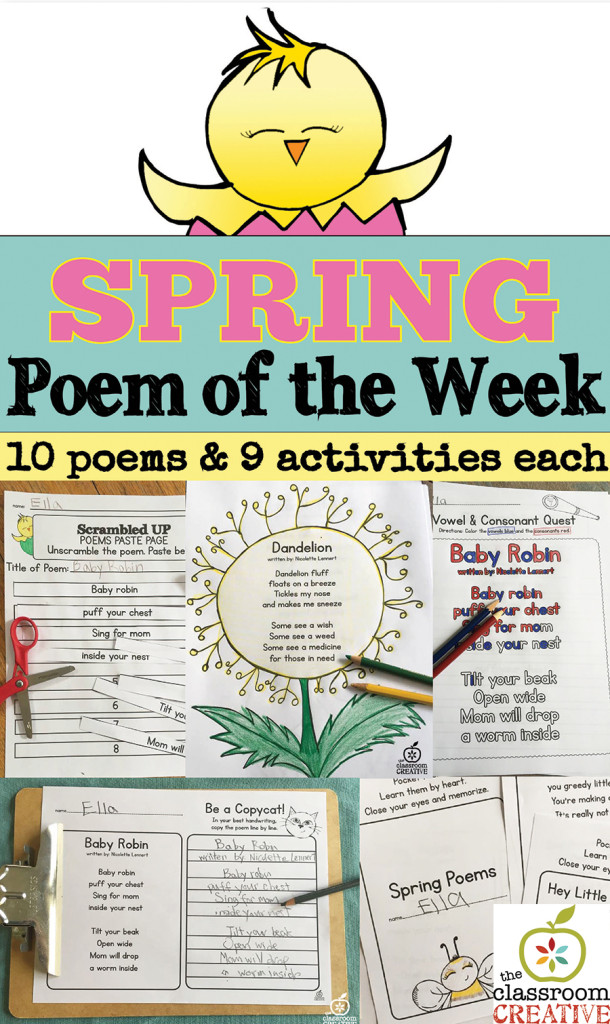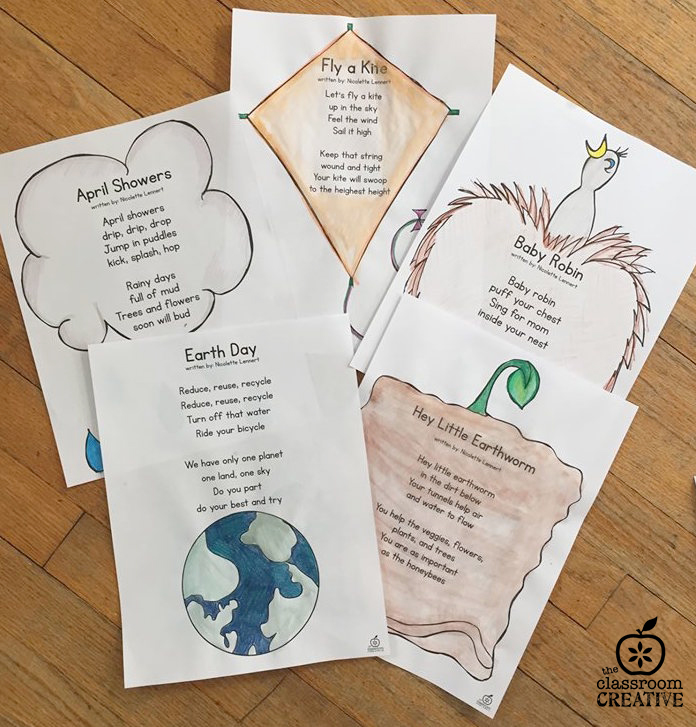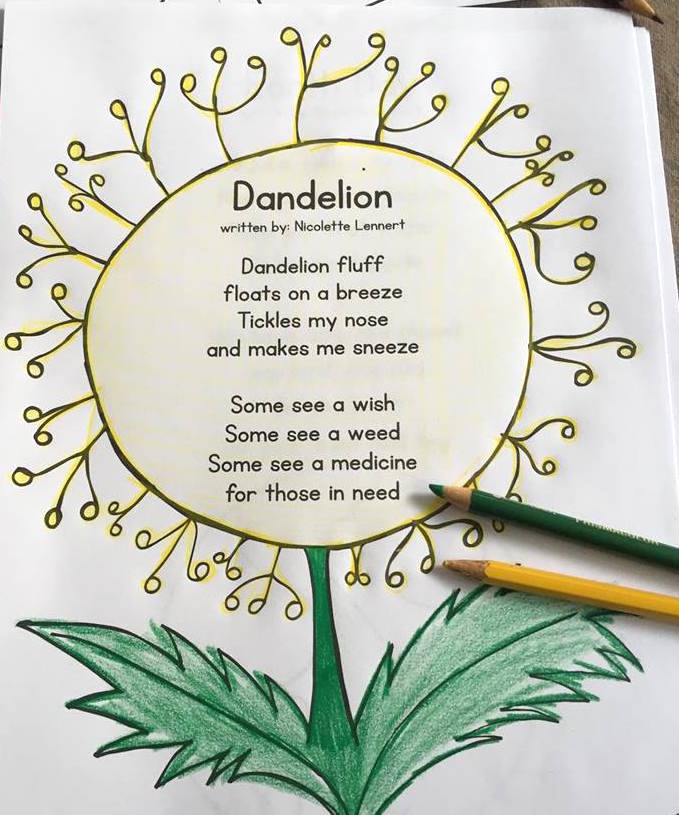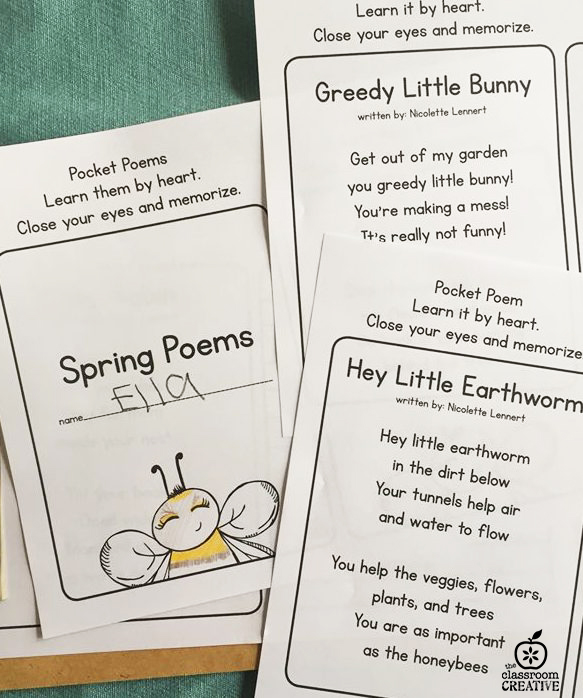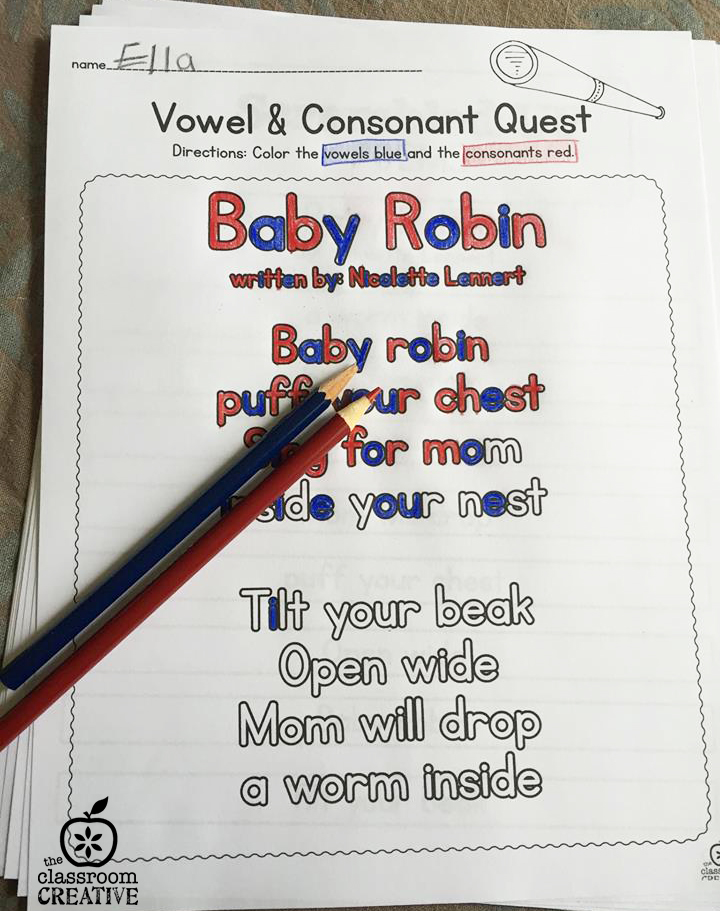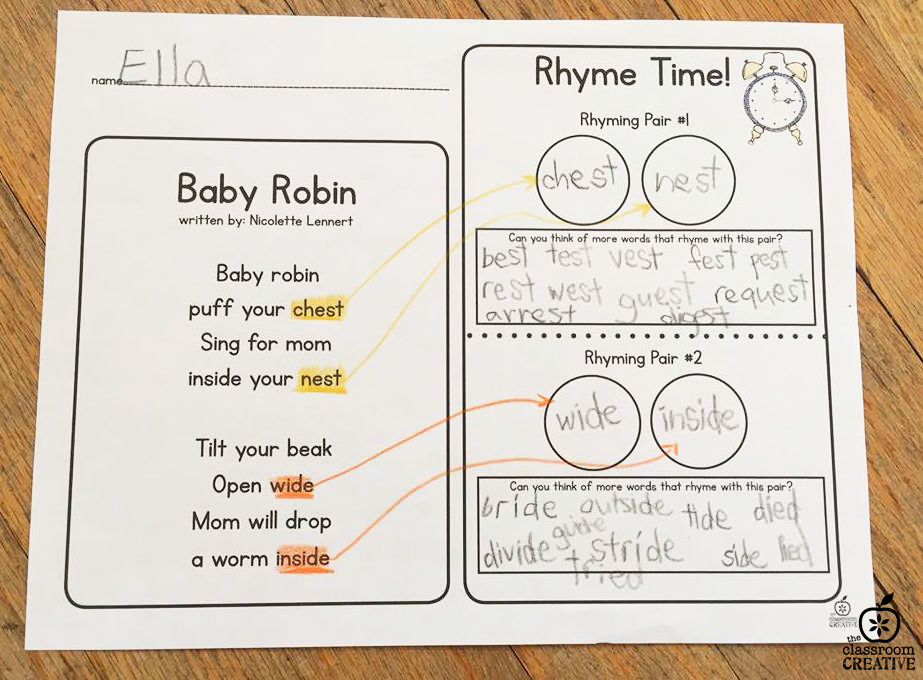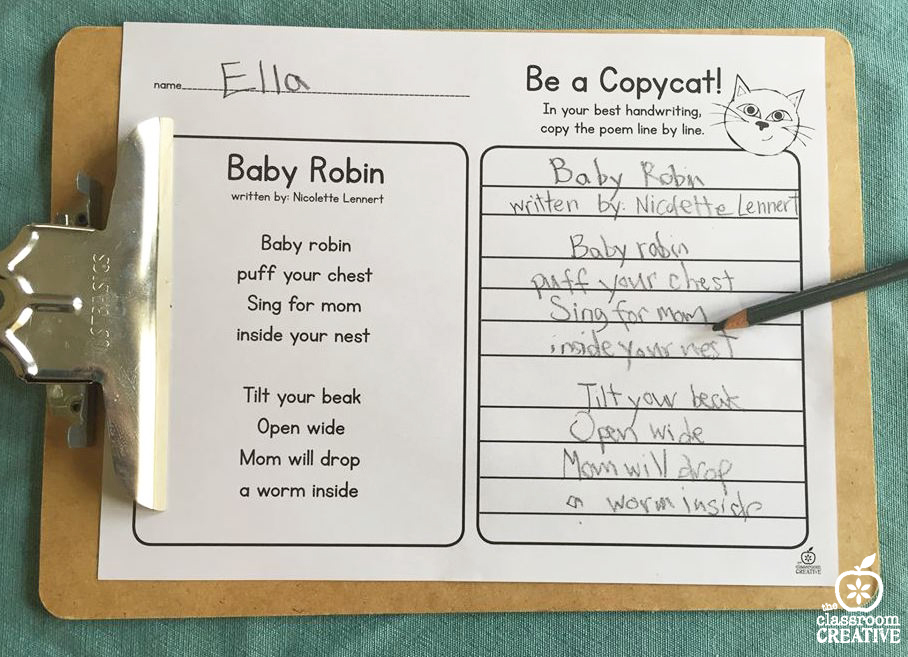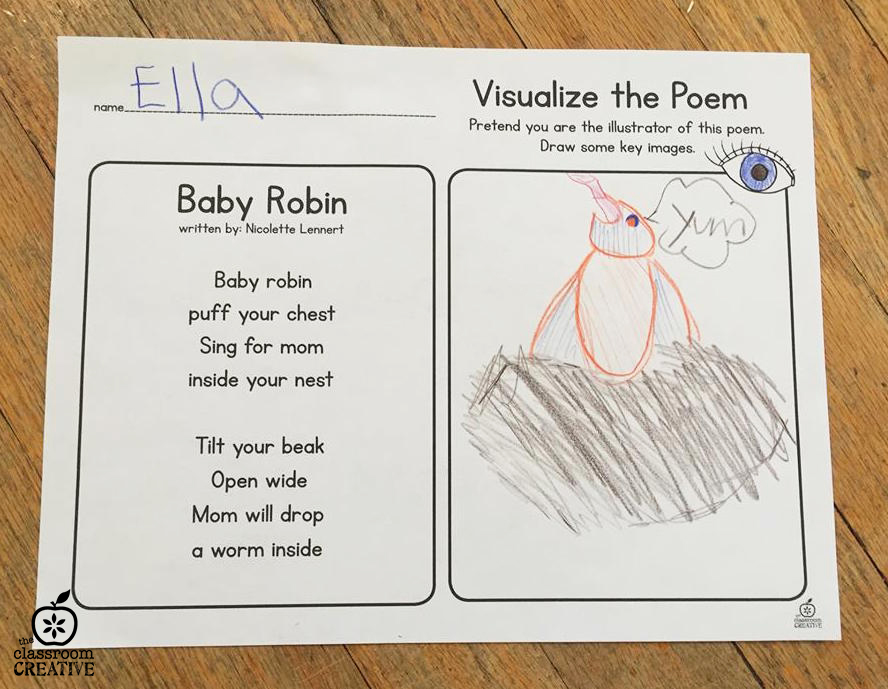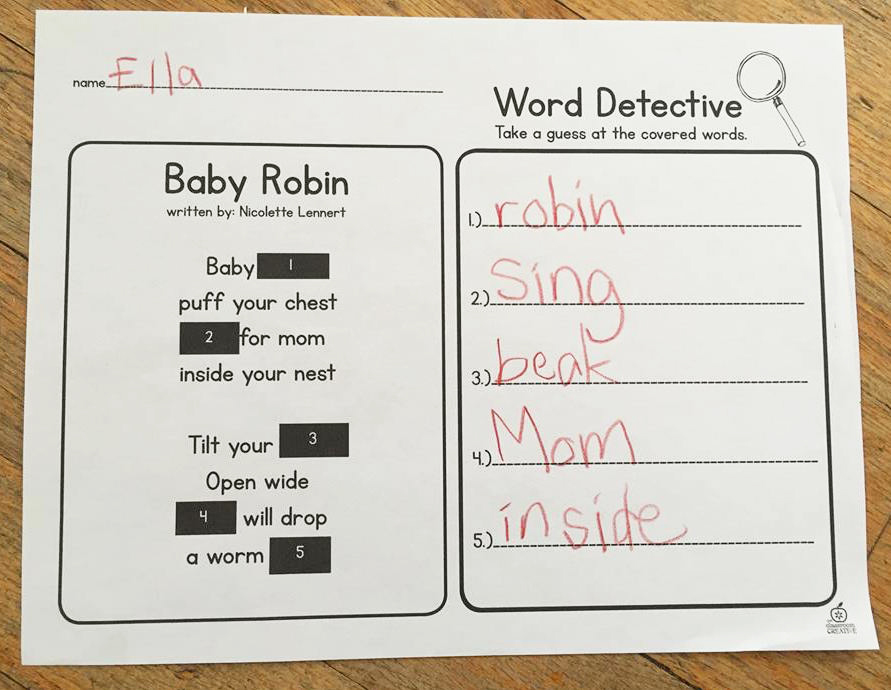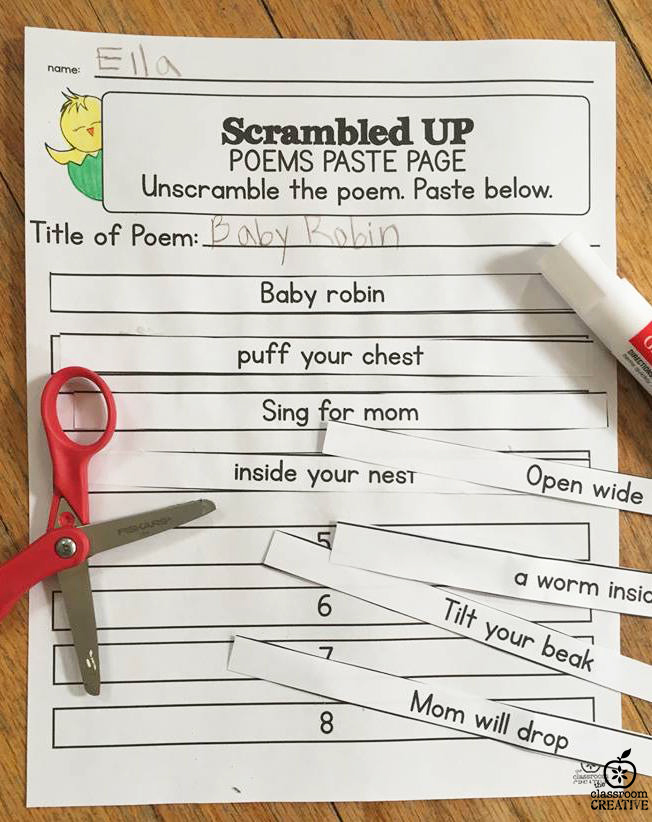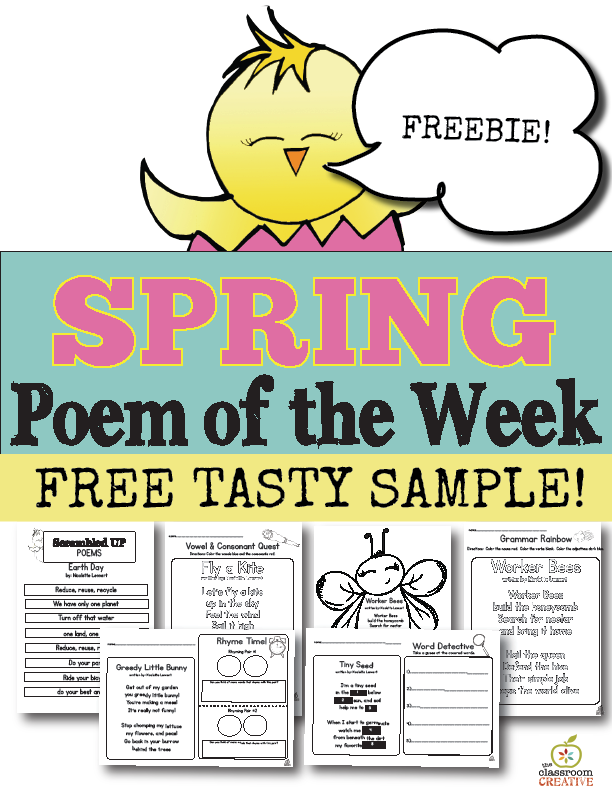Spring is in the air, which means it’s an ideal time to dive into a spring poetry unit. I’ve used the poem of the week format in my K-2 classrooms and now in my homeschool. Poetry is an ideal format for teaching a boatload of skills and standards without the burden of a ton of text. Poetry encourages auditory processing, rhyme recognition, and most of all, fluency.
Over the past month, I created an enormous Spring Poem of the Week Unit that features a ton of skill-based word work and a ton of fun. You can even grab it HERE for every season!
The spring pack features ten original poems with nine different activities and centers for each poem. Each poem follows the same two stanza format, so it’s easy for the kids to learn the poems by heart.
Now, let’s look deeper at this Spring Poem of the Week Unit! At the end of the post, there’s a link to test-drive a week for free, featuring the adorable poem: Greedy Little Bunny.
Illustrated Poems and Pocket Poems
First off, I recommend both the illustrated and pocket poems to start off your week each Monday. I had my students use a poetry binder, you could also use a folder. Spend about five minutes doing a shared reading. Use crazy voices. Try choral reading. Sing it. Act it out. Have fun!
Following the shared reading, invite the kids to watercolor or lightly color the illustrated poems with colored pencil. I recommend not to use markers because the darker colors can interfere with the text. All of these custom illustrations were chosen to help the student anchor or visualize the major theme of each poem.
The pocket poems will help the students commit the poem to memory “by heart” without illustration. Each week, students can add a poem to their book.
Now here’s a closer look at the literacy centers and activities that accompany each spring poem of the week. Each of the ten poems have the same centers, so students gain confidence and familiarity.
Grammar Rainbow
Grammar Rainbow is inspired by Montessori’s teaching of grammar, which if you are curious one evening, I HIGHLY recommend you google. It will change the way you view grammar! Basically, the Montessori method of grammar assigns a colored shape to each part of speech. Children do their word analysis by placing the colored shape above sentence strips. Over time, students begin to see the patterns in grammar via the colored symbols.
We’ve simplified this process by only assigning the Montessori colors to the word work. For students who are more advanced, we have also given the additional colors and tips for differentiation in our pack.
Vowel and Consonant Quest
Again borrowing from the brilliance of the Montessori literacy method, the vowel and consonant quest takes the famous blue and red color-coding from Montessori’s movable alphabet. This color-coding is a great fit for visual learner who will benefit from seeing the relationship and patterns between consonants and vowels.
This center is a great time to point out how the position of “y” in a word affects its color! For example, in our poem “Baby Robin”- the “y” at the end of “Baby” is a vowel, while the “y” at the beginning of the sight word “your” is a consonant.
Rhyme Time
In this literacy center, students search for the two rhyming pairs in each poem, and then they extend those rhymes! This simple work covers many standards and skills. The left-to-right orientation of this page is also a good fit for developing visual scanning and finding the “evidence” in the text. Which, this skill, in a common core world, is standard practice!
Be a Copycat
Bring back the art of “copy work” to your classrooms. In the homeschool world, copy work is a mainstay. Handwriting and cursive work still needs to be center-stage in our K-2 classrooms and homeschools, because study after study shows that handwriting trains the brain differently than just typing. Copy work of poems is an ideal fit for new writers, because the amount of text is minimal. Even students with dysgraphia and OT issues can handle the workload for this.
Visualize the Poem
This center “hires” the students as the illustrators of the poem. It would make for good independent or early finisher work.
Word Detective
This activity can be used in one of two ways. Before you introduce the new poem of the week, the kids could use context clues to be a word detective and “guess the covered word”. Alternatively, you could use this as a center later in the week as independent work once the kids are somewhat familiar with the poem.
Scrambled Up Poems
Last up, our scrambled up poems are a perfect center for later in the week, once the students have memorized and worked with the poem. Given that each of our ten poems have two stanzas with four lines each, this literacy center is a great activity to work on sequencing.
Now that you have seen each of the centers and activities for each poem, head over to Teachers Pay Teachers to download an entire week of activities for our Spring Poem of the Week on us.
Since these cover so many
Stay connected with us at The Classroom Creative:
- Google :: Instagram :: bloglovin’
- Facebook :: Pinterest :: Twitter
- Email :: Teachers Pay Teachers
Happy Spring!
Nicolette
